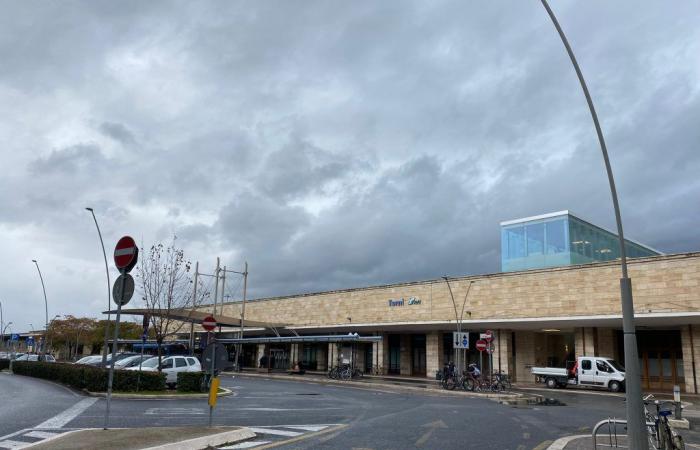Educational panels at 16 stations with the aim of providing visitors with information on the surrounding area, creating a more engaging and enriching travel experience. The ‘Central Italy Railway’ project also arrives in Terni on Saturday 22 June. The unveiling ceremony of the information panel will be held at 11am on platform 1 in the presence of the regional institutions and associations involved in the project.
‘The Railway of Central Italy’ The project – by the youth cultural association Riattivati, carried out thanks to the contribution of the Fai – Fund for the Italian Environment Ets and Intesa Sanpaolo as part of the ‘Places of the Heart’ campaign – concerns the Terni – Rieti – L’Aquila – route Sulmona of the Italian railway network. The initiative, born from a small reality in Rieti, is now in its fourth stage and crossed Lazio and Abruzzo in the month of June alone to reach Umbria. July 20th will be the stage that will involve the Marmore station.
The project ‘The Central Italian Railway’ was born from the intuition of the Promoting Committee of the Central Italian Railway: Amici di Rieti, Reactivated Youth Cultural Association, Rotary Club Rieti, ‘S. Fabi’ – Rieti, with the desire to raise awareness of the territories of the central Apennines with a series of activities. «The valorization of the railway in central Italy meets the way of traveling that is developing in recent years, the new type of railway tourism, aimed at lesser-known villages, which allows travelers to enjoy the landscapes from the windows – we read in the press release of the promoters of the initiative -. The central Italian railway from Sulmona crosses the Peligna valley and the San Venanzio gorges, arriving in L’Aquila; it then climbs the Apennines up to Sella di Corno crossing the Rocca di Corno plateau, where transhumance is still practiced. Then down towards the Antrodoco Gorges, where the Velino river flows and is supported by the thousand-year-old Via Salaria. You then cross the San Vittorino plain rich in waters, the sulphurous ones of Cotilia, known for millennia for their therapeutic properties, and those of the Peschiera spring which still supplies water to Rome today. In this area there are the remains of the Baths of Vespasian and the Villa of Titus, originating in this area. Arriving in Rieti you can see the medieval bell towers surrounded by buildings from various eras and the Velino river with the remains of the ancient Roman bridge. The relevant stops in the valley of the ancient Lacus Velinus are: Contigliano with the Collegiate Church, Greccio where San Francesco began the tradition of the nativity scene in 1223 and in Umbria the Marmore Falls, the highest artificial waterfall in Europe, created by the Roman consul Manio Curio Dentato in 271 BC to reclaim the Rieti plain. From here a panoramic route leads to Terni, populated since the Bronze Age. Protagonist of the industrial revolution with heavy industries and hydroelectric plants, it is also the city of lovers, with Saint Valentine as its patron saint.”
The stages ‘The Central Italy Railway’ consists of a route traced along the active stations on the Terni – Rieti – L’Aquila – Sulmona line to boost tourism in little-known villages, in particular those located inside the crater of the 2016 earthquake. «A path aimed, therefore, at generating a positive impact on the local economy and preserving the cultural and natural heritage of the area. The objective is to orient tourists through information panels placed in 16 stations. The panels provide information
detailed information on the history, culture, attractions and peculiarities of each place, also with interactive QR codes, creating a more complete travel experience. The project uses innovative and sustainable techniques because it is based on the use of UV-printed aluminium: the durability of the panels reduces the need for frequent replacement, contributing to greater economic efficiency and reducing environmental impact. The QR codes on the panels allow you to deepen your knowledge of the places through a landing page that promotes knowledge of the history and peculiarities of the area and to connect to the websites of the municipalities of the railway stations”. The project, like the journey of a train, develops through different stages, events and occasions in which to celebrate and reveal a new panel from time to time; the events make up a calendar that develops throughout the year. On Saturday 1 June, the first stages were revealed Rieti and L’Aquila, Sulmona on Saturday 15 June; the following dates are: Terni, Saturday 22 June; Antrodoco Center, Saturday 6 July; Marmore, Saturday 20 July; Pratola Peligna, Saturday 3 August; Antrodoco-Borgo Velino, Saturday 24 August; Raiano, Saturday 7 September; Castel Sant’Angelo, Saturday 21 September; Molina, Saturday 5 October; Cittaducale, Saturday 9 November; S. Demetrio De’ Vestini, Saturday 23 November; Contigliano, Saturday 7 December; Paganica, Saturday 14 December; Greccio, Saturday 21 December. On the day of the unveiling of the panel, a ceremony is planned for each station in the presence of representatives of local institutions and any activities linked to the territory in which everyone can participate.





